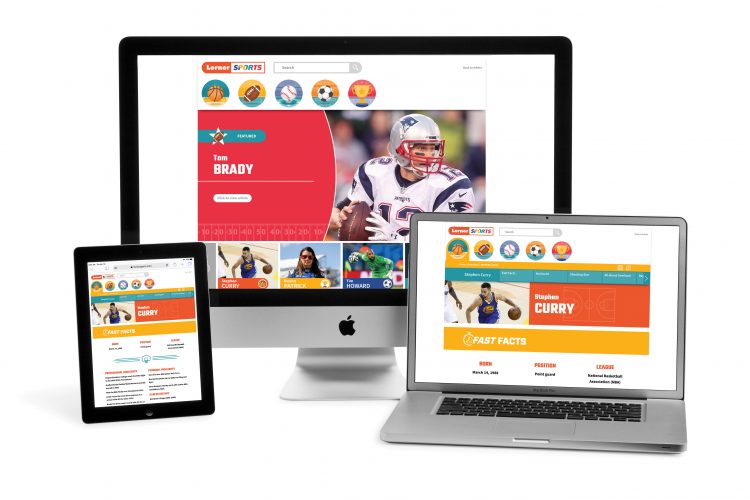A Deep Dive into the Lerner ™ Sports Database

by Kris Tomes, Digital Product Manager
Introducing our versatile and dynamic Lerner Sports Database, an essential resource for sports enthusiasts, emerging readers, and diligent researchers! A resource designed for students in grades 2-5, this comprehensive database features hundreds of engaging articles, more than 2,000 intriguing fast facts, upwards of 2,000 vivid photos, and over 1,500 clear glossary definitions, with continuous expansions on the horizon.
Our expertly-curated content, tailored for young minds, is routinely updated to ensure access to the latest information in the world of sports. With new articles added regularly, there’s always fresh and exciting content to explore, keeping readers informed and engaged year-round. This evolving platform is ideal for nurturing a passion for learning and sports in young students, accessible to an unlimited number of users simultaneously.
Quick Links, In Case You Want to Jump In
- Take a look at our demo video
- Sign up for a free 2-week trial
- Learn more about our Editorial Philosophy
- Check out our FAQS
- Connect with our Customer Service team on pricing
- Read our review from School Library Journal
- Read our review from Booklist
Without further ado, let’s take a deeper dive into the Lerner Sports Database!
Kid-Friendly Interface & Tools
The Lerner Sports Database was designed specifically for grades 2-5, with an easy-to-use, age-appropriate interface. Accessible via computers and tablets, the home page displays featured articles to encourage browsing and discovery. Students can also navigate to their preferred sport by clicking on the category icon. Or students can type athlete names into the guided search bar, which has fuzzy logic to catch misspellings.

Breadcrumbs appear once students leave the home page, and are hyperlinked so students can easily find their way back to where they started.

A toolbar is pinned to the top of articles, so students can always access their tools. The toolbar consists of the Glossary, Source Notes (if applicable), Cite This!, and a collapse button for smaller screens.



Students can quickly navigate around an article by using navigation bar, which sits directly under the toolbar. If an article has more than 4 sections, students can use the carousel arrows to see more sections.

Articles begin with Fast Facts, so students can quickly learn about an athlete and read any timely updates. Fast Facts include birth, position, league, professional highlights, personal highlights, and career history. Fast Facts also allow students to decode the article before beginning to read the long form.

Articles also include glossary pop up definitions, so students are able to understand new words in context. These glossary terms directly correspond to the Glossary tool in the toolbar.

Articles conclude with a carousel of recommended athletes that have something in common with the current athlete the student is reading about. This encourages discovery and interconnectivity.

Handy Admin Tools
Lerner Sports Database also comes with helpful Admin tools that allow staff to review the most popular articles, how often articles are read, and the number of logins.


Student Privacy, Accessibility, and Curricular Connections
Lerner Sports Database does not track individual students. All usage statistics used in the Admin tools are based on the common user credentials. Plus, authenticated URLs means students never have to enter credentials, and can access the database from school or home.
Lerner Sports Database adheres to Web Content Accessibility Guidelines 1.0, 2.0, and 2.1, and is designed to be accessible to students with disabilities using assistive technologies. The database is also compatible with text-to-speech, enhanced text visibility, and Google Translate programs to ensure all learners can read and succeed.
Lerner Sports promotes digital literacy and correlates to AASL Learning Standards, CSTA Computer Science Standards, and Common Core Standards regarding technology, research, and comprehension.
—
Comments